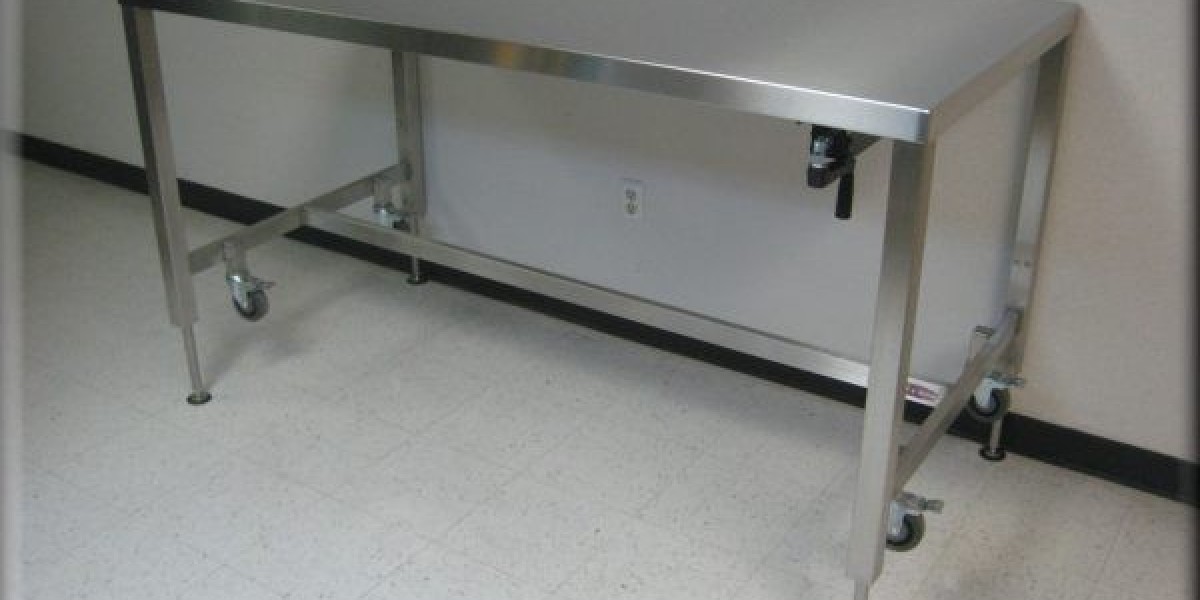Stainless steel tables are the unsung heroes of industrial environments. They are tough, durable, and stylishly sleek. Whether you’re in food processing, pharma, manufacturing, or a lab, these tough surfaces take quite a beating on the daily. But like any furniture, stainless steel tables need a bit of frequent maintenance to stay in top form. So, let’s talk maintenance and try to take advantage of these innovative additions to the workforce.
● Regular cleaning
Stainless steel is one of the best materials for the job, as it is rust-resistant and hard to stain. But neglect it too long, and you might see some unfortunate signs of wear: dullness, discoloration, or (gasp!) corrosion. Keep your steel shining like the industrial star it is with regular cleaning.
Grab a damp cloth, add a bit of mild soap or detergent, and give your table a good wipe-down. Skip the harsh stuff—abrasive cleaners can leave scratches you’ll regret. Follow up with a soft towel to dry things off and prevent those annoying water spots. It’s a quick ritual, but it works wonders.
In the industrial world, your tables are bound to get up close and personal with grease, oil, and all sorts of gunk. No need to panic—just arm yourself with a specialized stainless steel cleaner or whip up a vinegar and water mix to break down the grime. Be sure to rinse well and dry afterwards to avoid streaks.
Stainless steel does not have good resistance to bleach and chlorine-based cleaners. They can corrode or pit the surface faster than anything else. If your table accidentally comes in contact with harsh chemicals, rinse it immediately with clean water to avoid a tragic outcome.
● Preventing Scratches
While stainless steel is tough, it doesn't mean it’s immune to scratches. Imagine dragging sharp tools across your favorite phone screen. The same goes for your tables. Scratches not only mess with the aesthetics, but they can also create pockets where bacteria like to party (especially bad news in food processing and healthcare environments).
Protect your table like you would any valuable gadget. Place rubber mats or covers on high-traffic areas where sharp tools or heavy equipment might land. It is a small step, but it saves your table from looking like it has been through a battle zone. Steel wool and metal brushes may seem like a good idea, but they’ll leave your stainless steel table looking like a scratched-up mess. Stick to soft cloths, microfiber towels, or sponges for a safe, scratch-free clean.
● Rust Prevention
Stainless steel has corrosion resistance, but that doesn't mean it's completely invincible. In industrial settings, tables are constantly exposed to moisture, chemicals, and heat, all of which can lead to rust if you’re not careful.
Water spots are more than just unsightly; they are also potential breeding grounds for rust. Keep a towel handy and dry your table after any spills or cleaning sessions. Additionally, the harsh industrial world may expose your stainless steel to all kinds of corrosive substances. Minimize contact with chemicals, and if your table does get splashed, clean it immediately to prevent long-term damage.
Conclusion
With just a little attention and some basic care, your stainless steel tables can stay as shiny and functional as the day they arrived. From routine cleaning to scratch prevention and rust control, these tips will help you keep your industrial tables looking their best. After all, a well-maintained table is a happy table—and in the world of industrial work, happy tables mean better productivity and fewer headaches.









